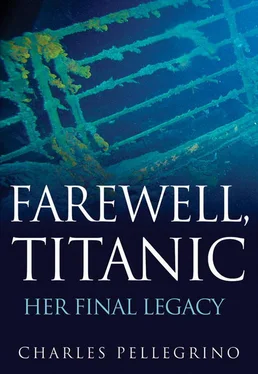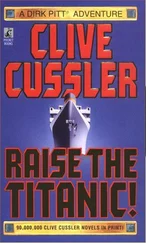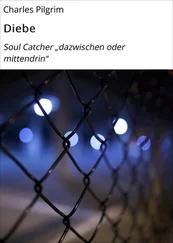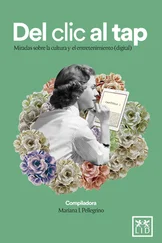Behind them, in the countryside of Worcestershire, England, the Morley family’s first confectionery and ice cream shop had been standing for more than three generations. At the time of his departure, Morley was leaving behind a business that had begun expanding into neighboring towns, and he was also leaving a twelve-year-old daughter—all for the sole purpose of spending the rest of his life with Mrs. Marshall.
Morley had sold his interest in two of the family’s shops with the help of his brother. A portion of the proceeds was traveling with him aboard the Titanic , to be used as a down payment on a new life in the western United States. The rest of the money, as arranged with Morley’s brother, would provide an income for the twelve-year-old girl he had resolved never to see again. Morley had also arranged, through his brother, for the rest of their family to believe that his trip to America—to the warmer, drier climate of California—was an attempt to find relief from what he had convincingly displayed as the potentially life-threatening health of his lungs.
Convincing people of such things was not difficult in those days. Common colds and even bruised thumbs often turned deadly, and the vow of “till death do us part” usually did not mean for very long. Stewardess Violet Jessop had lost two little brothers and her little sister to what by the last third of the twentieth century would be regarded as easily treatable infections. When Violet was a child, her parents had moved her to the mountains, based on the belief, similar to Morley’s, that drier air and regular doses of creosote (a product of oil tar) and red wine would cure her nearly fatal lung infection. Jessop’s lungs recovered, but her father died suddenly in 1903 from a simple infection, not quite having reached the age of forty.
According to plan, Morley was to board the Titanic as Henry Marshall and simply disappear.
By five past midnight, Morley and Phillips and the rest of the passengers who were awakened by Hardy and his junior stewards were filing past the second-class dining saloon and the library. Even below the decks, they could hear excess steam being vented from the pipes near the tops of the smokestacks, to prevent damage from the boilers that had been providing full-ahead power to engines that were suddenly standing idle.
Despite the alarming hiss from outside, the empty library was, in its own way, eerily silent. Fellow second-class traveler Lawrence Beesley—a schoolteacher who was headed now toward a destiny in the same lifeboat as Kate and her unborn daughter—would write later that he could look back across the years and recall every beautiful detail of the room, “with lounges, armchairs, and… writing bureaus round the walls of the room, and the [books] in glass-cased shelves flanking one side, the whole finished in mahogany relieved with white fluted wooden columns that supported the deck above.” It seemed incomprehensible to Beesley that a mindless, rudderless mass of ice should be able “to threaten, even in the smallest degree, the lives of [so many] men and women who think and plan and hope and love.”
Masabumi Hosono also passed the deserted library on his way to the boat deck. The Japanese efficiency expert who had streamlined the Manchuria Railway and the Trans-Siberian Express still had several pages of “On Board RMS Titanic ” stationery folded into his coat pocket. Letters written earlier in the day and posted in a mailbox outside the library door were now bagged and already underwater in one of the bow section’s sorting rooms. The stationery was durable rag-based paper, and the inks used in 1912 were indelible.
Given the right conditions, letters written by Hosono and other passengers during the first and last voyage—or stowed away by Howard Irwin’s friend in what was to become an oxygen-starved environment—were about to enter the vault of the ages, allowing the Titanic ’s people to speak clearly after a hundred years or more. In at least one case, the comparative resilience of the Titanic ’s paper and ink (compared to the ship’s bulkheads) would bring understanding to a family divided and even a measure of vindication mingled with joy and profound sadness.
For all of his efficiency, Hosono climbed toward the boat deck with at least a five-minute handicap behind Beesley, the Mellingers, the Marshalls, and the Laroches. Initially, he had not taken very seriously the sleep-disrupting sensation of the ship riding over a bad stretch of track or bumping up against a pier in the mid-Atlantic. For a while, he wondered why the engines slowed down to a stop, but he did not imagine that anything disastrous could be unfolding underfoot, so the man least likely to ignore the unexpected stowed away his own curiosity and drifted off peacefully to sleep. If Hardy knocked at his door, the efficiency expert only vaguely heard it. Not until a stranger pounded on the door did with near wood-cracking force did Hosono rise and ask impatiently, “What is it?”
He found a steward standing outside, holding a life jacket.
“What—?”
“You need to go up to the boat deck at once,” the steward said, then thrust the life jacket at him and turned away.
“Wait!” Hosono called. “Tell me what has happened.” But the steward did not answer and merely hurried away.
The complacency with which Hosono had greeted the first signals of disaster faded, and the efficiency expert dressed so hastily that he pulled on trousers, a coat, and a life jacket over the coat—but no shirt. When he arrived on the second-class promenade space, he was astonished to see the canvas covers being pulled off lifeboats and scores of passengers running agitatedly to and fro.
One of the boat-deck runners swore, “I’ll fight death to the last if it comes.” Another paused to joke that she had put on black stockings “to scare the sharks.” On every one of them was tied a cork and canvas-wrapped life jacket—the white-painted “emblem of death at sea.”
Hosono stopped several of the passengers, asking the same question: “What is the cause of this?” But no one seemed to know what had happened. He now understood that there was not a moment to lose, so when a sailor indicated that the lifeboats were to be cranked down to the lower decks and loaded from nearer the water’s surface, he obeyed at once—even though the man’s order seemed perplexing: “Listen carefully! Everyone race down to the third-class deck!” No one else seemed to be following Hosono down toward the rear well deck, and when the young railway manager looked up along the port side and saw that the keels of the lifeboats were still stationary above him, on the boat deck, he decided to turn back.
“No, you don’t!” a crewman shouted, blocking his way. “The boat deck is for first- and second-class passengers only.”
Suddenly, Hosono became acutely aware that he was shirtless and disheveled—and clearly a foreigner, probably even what the crewman considered to be a member of the “lower” races.
“But I hold a second-class ticket!” Hosono said sternly. He had put the ticket in his wallet, and he had left the wallet in his stateroom. At 12:15 a.m., Hosono realized that his troubles this night had only just begun.
• • •
Approximately three hundred paces forward, in the bow of the ship, Violet Jessop was no longer fighting a compulsion toward laughter. Here the manifestations of danger varied greatly, depending on which side of a watertight bulkhead one happened to be standing. At a quarter past midnight, the steam room and cooling rooms of F deck’s Turkish baths were still quite dry; and just in front of the baths, although water in the swimming pool room was beginning to shift with the tilt of the deck, the exercise clock would continue keeping time for at least another half hour, along with the clock in the cooling room. Further forward, on the far side of the steel dam beneath the first smokestack, the lowermost portholes on F deck were already becoming submarine windows on whatever sea life was being attracted to the lights.
Читать дальше











